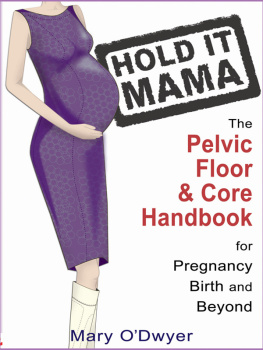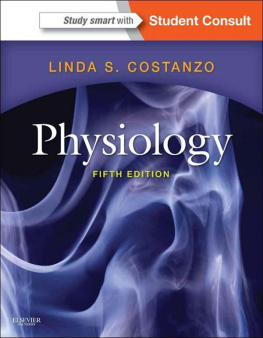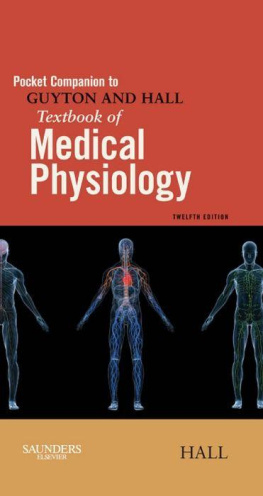
HOLD IT MAMA
THE PELVIC FLOOR AND CORE
HANDBOOK FOR PREGNANCY, BIRTH & BEYOND
Copyright 2011 MARY ODWYER
All Rights Reserved
RedSok Publishing
PO Box 1881, Buderim, Queensland, Australia 4556
www.redsok.com
www.holditsister.com
eISBN: 978-0-9870766-3-2
No part of this publication may be reproduced, stored in any retrieval system, or transmitted in any form or by any means without the prior permission in writing by the publisher, except for the inclusions of brief quotations in a review, nor be otherwise circulated in any form of binding or cover other than that in which it is published.
Cover Design & Illustrations by Maggie Allingham
Edited by Tania McCartney,
Photography by Barry Alsop, Eyes Wide Open
Disclaimer
All names used in the case studies are fictional. This book represents research and clinical experience, is for educational use and is designed to help the reader make informed decisions.
This book is not a substitute for treatment by a physiotherapist or doctor.
The publisher, author and distributors expressly disclaim any liability to any person for any injury or inconvenience sustained, or for any use or misuse of any information contained in this book. The author has made every effort to provide accurate and clear information in the book, and cannot be responsible for any misinformation.
This book is a work of non-fiction. The author asserts her moral rights.
HOLD IT MAMA
The pelvic floor handbook for pregnancy, birth and beyond
From the author of Hold it Sister! comes this indispensable guide to the pelvic floor, pelvis and abdomen during pregnancy, childbirth and postpartum.
Physiotherapist and womens health professional Mary ODwyer has been treating women for over thirty years and holds a particular professional interest in the pelvic floor. She is an advocate for effective pre-exercise assessment protocols to ensure safer pelvic friendly exercise for women. Mary has undergone postgraduate studies at Melbourne University and is currently a Fellow at Bond University in Queensland.
She conducts practical workshops to empower women with self-knowledge and trains fitness professionals to identify at-risk clients and prescribe safer exercise.
Other books by Mary ODwyer:
My Pelvic Flaw (Redsok Publishing, 2007)
Hold It Sister (Redsok Publishing, 2010)a completely revised and updated version of My Pelvic Flaw
holditsister.com
Acknowledgements
This book would not have been possible without my dearest friend and editor, Tania McCartney cheering through ongoing edits despite her own heavy writing schedule; to Maggie Allingham for her stylish diagrams and the sunshine she brings; to Barry Alsop for his humour and professional photos; to Natalie for falling pregnant at the right time; to the lovely Australian and United Kingdom mothers who contributed birth stories, and to the many Australian midwives and physiotherapists for professional reviews. Thank you Craig, Daniel and Sam for reviewing and sub-editing and deepest thanks to my husband Craig for his care and support.
Dedicated To
Mary Ellen
Mary Bridget
Laura Elizabeth
for your gifts of grace, love and strength.
Introduction
Amazing changes in the pelvic floor, pelvis and abdomen occur as pregnancy, labour and childbirth transform a womans body. Many women and partners have unanswered questions about potential pelvic floor and abdominal issues associated with pregnancy and birth. Ive written this handbook for expectant and new mothers to provide practical information and specific solutions concerning the pelvic floor and pelvis during pregnancy, labour, birth and postpartum.
The questions I am most frequently asked, are:
- How do I prevent tearing during a vaginal birth?
- Does caesarean birth prevent incontinence?
- Which positions are best to birth my baby?
- Why are pelvic floor exercises necessary after a caesarean?
- Why is sex painful since my babys birth?
- How do I know if I have a prolapse?
- Which exercises help separated tummy muscles?
- Why is my caesarean scar still painful?
- Am I doing pelvic floor exercises correctly?
Pregnancy is the ideal time to regularly exercise the pelvic floor to support the growing uterus, maintain continence and control pelvic and lumbar strain. Find It, Control It, Train Itmy easy-to-follow 3-step programwill help you develop the correct pelvic floor muscle action, strengthen pelvic floor muscles, and learn the exercises which train and protect the pelvic floor throughout life.
During birth, pelvic floor integrity is enhanced through using gravity-assisted positions, pelvic movement, pain management techniques, visualisation and relaxed jaw breathing. Birthing in a calm, safe environment with caregiver and partner support allows women to maintain focused awareness and trust their bodies ability to birth naturally.
Specific chapters on recovery following vaginal and caesarean births are included. Both vaginal and caesarean births have the potential for pelvic floor and abdominal complications, which clearly benefit from early rehabilitation of muscles and scars.
After baby is born, recovering pelvic floor annd abdominal muscle strength is a high priority. The Shrink the Jellybelly routine introduces exercises to improve strength from the inside out, as early as 24 to 48 hours after an uncomplicated vaginal birth. This safe, graduated program works to rebuild and maintain pelvic floor, core and trunk strength.
I hope this handbook increases your confidence during pregnancy, labour, birth and postpartum by presenting preventative measures and treatment options to minimise pelvic floor and associated pelvic/ abdominal risks. At the end of each section you will find a page for writing questions to follow up with your antenatal carer.
Websites have been included throughout the book as alternative sources of information, which may vary between different countries. Always seek the opinion of your antenatal carer before deciding on a course of action.
More than the technicalities involved in birthing and pelvic floor health, my dearest hope is that Hold It Mama brings you the confidence, joy, emotional and physical strength every woman should feel on her journey to motherhood and beyond.
Mary ODwyer
A note to the reader:
Always seek professional advice from a womens health physiotherapist, midwife, general practitioner, obstetrician, gynaecologist or urogynaecologist if you are concerned about any pelvic floor issues throughout your pregnancy, labour and postpartum period. Advice given in this book should be considered in conjunction with advice from your healthcare professional. The publisher, author and distributors expressly disclaim any liability to any person for any injury or inconvenience sustained, or for any use or misuse of any information contained in this book. The author has made every effort to provide accurate and clear information in this handbook and cannot be held responsible for any misinformation.
SECTION 1
The pelvic floor is an intriguingly complex area with a span of muscles, tendons, nerves, blood vessels, ligaments and connective tissues. It contains different muscular layers with strong connective tissue (endopelvic fascia) and external genitals. The muscles sit inside the pelvic girdle bones that join at the pubic symphysis in front and at the sacroiliac joints in the back.
Next page





